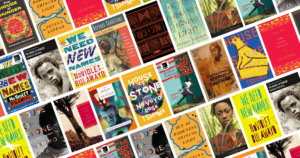
Every June, a ripple of excitement moves through the African literary world when the Caine Prize short list is announced. In a sense, it’s a gauge of what the contemporary African short story looks like; what styles, topics and moods reverberate and bubble to the surface. Granted, the shortlist not an objective measure, since a lot depends on which stories publishers submit and the taste of each year’s judges. Nevertheless, I look forward to each year’s list as it introduces us to fresh new voices and celebrates those we may already know.
As a writing teacher, I am especially interested in the stories from a craft angle: what is it about each one that got it selected, and how can craft help us unpack what makes each story masterful? I intend to ruminate on this, one story per week, and hope it provokes a conversation about the art of the African short story. These will not be standard reviews, nor a comparative take on the five stories; rather, I will highlight how each writer wields one or two craft tools to create an artful whole. The assumption is that readers will have read the stories. Go here to read more of my reviews of these stories.
***
Playing with Time: “A Double-Edged Inheritance” by Hannah Giorgis [ Read the story here]
A story is a magic carpet that can take us over the length of a day or a life time, or even multiple lifetimes. It all depends on the writer’s conjuring. We can also decide whether to arrange the events of our plots chronologically, that is, as they occur over time, or play with this order, moving back and forth in time. Hannah Giorgis boldly chooses the latter, and I’d like to explore to what effect. What is gained or lost by the order in which one presents the sequence of events in a story and why make particular sequencing choices?
Spoiler alert: if you haven’t read this story, please do so before you read this.
First, I’ll summarize the story chronologically, so we can compare this to the way the author arranges her plot sequence. The earliest events are back story, that is, Almaz, the great-aunt’s background details. There is a leap forward in time to her niece, Tigist’s college entry, her brilliance and refusal to study abroad. This is followed by Tigist meeting Robel, her pregnancy, Robel’s father’s refusal to accept the affair, and his threat to Robel. Indeed, this is carried out: Tigist is badly beaten up, ends up in hospital, but does not lose her pregnancy. She moves to the US for safety and her baby, Meskerem, is born. We next encounter Meskerem in high school when she visits Addis. Fast forward to her college years when Tigist dies in a car accident and Meskerem writes about Almaz in a school essay. Later, while Meskerem is doing her PhD, her great aunt dies and Meskerem goes back to Addis for the funeral, where she meets her father for the first time and the final tragic event occurs. Obviously, this plotting does not do justice to the story itself.
As we can see, the above is radically different from how the story is told, which goes back and forth multiple times, even within scenes. Moreover, it takes huge leaps of decades, sometimes skipping what one might consider pertinent events, while slowing down minutely to elaborate on other events. Why does the author make these plot choices?
The most obvious effect is the creation of suspense. This story falls under the crime/noir genre, so suspense is a vital element, though all stories are enhanced by suspense to varying degrees. Giorgis does this by giving incomplete information, which she fills in gradually and in bits and pieces as the story progresses. For example, right from the start, we wonder why Meskerem grieves a great-aunt, of all relatives; why and how she was ‘born into blame;’ and why she needs protection and from whom? We can’t help but read on to find out.
Another good example of the strategic withholding of information is when we suddenly find Tigist in hospital. How did that happen? The details of the attack are revealed only after the fact. Also, much later, when Robel bumps into Meskerem in the market place and recognizes her eyes, nothing more is said about this at the time, leaving us in suspense. It is only a couple of pages later when Meskerem climbs into an army truck as General Robel Girma’s daughter that we know the truth for sure. Further, there is no actual scene of acknowledgement and reconciliation; the author leaves that to our imagination. Suspense coupled with making the reader do some of the imaginative work enhances the reader’s engagement with the story.
The movement back and forth is sometimes quite jarring, but deliberately so. A good example of this is the hospital scene. In the ‘present’ moment, Tigist’s wounds have been treated, but we go slightly back in time to when the doctors first encountered her, then back to the present when Almaz lies to the mother about the attack. After this, we go further back to when Almaz discovered the affair and warned her niece, then we return to the hospital room briefly. Right after this, we get a bit of Robel’s back story and quickly return to the present: he goes to the hospital. We see him with Tigist as she sleeps but are jerked back to the moment before he enters the hospital room as Almaz storms out. Then we’re back in the present, and after some hours, Almaz returns and confronts him. Robel promises to keep Tigist safe, and the next thing we know, she has landed in the US.
This jerky back and forth and leaps of time creates an unsettled feeling in us as we try to situate ourselves: what is happening and when? But this unsettling feeling also mirrors and enhances the way the characters are destabilized or alienated in some way. Take Almaz, who “didn’t behave like an Ethiopian woman should,” or Tigist, who stands out as exceptionally brilliant but unconventional in her refusal to leave Addis for her studies. Meskerem too is dislocated, moving back and forth between two worlds, exemplified by her writing about her Ethiopian great aunt at her US college, while reading lots of American and English books when back in Addis. Likewise, Robel is a rebel in his youth, resisting his father’s path, and when he ultimately succumbs to it, it leads to his death. They are all displaced in their worlds, and the same effect is created in the reader by the multiple shifts and leaps in time; we remain unsettled in their world.
Another effect of the time shifts is that the stories of the three women are not presented one after another in progression but rather all at the same time, meaning that the stories and themes intertwine like branches of separate hugging trees. The women are distinct but their destinies are not; they are held together by fate. The narrating of their life paths almost simultaneously disrupts our expectations about human progress, especially in the lives of women. Do they really get better over time or is fate and other forces moving them two steps forward, three steps back? The author’s choice of form sharpens her themes and content.
As we can see, a close analysis of technique unveils thematic layers we might not have been aware of at first reading. As writers, this kind of close reading – asking why authors make particular choices and to what effect – cannot but improve our creativity. We can learn from Giorgis’s daring play with time.









COMMENTS -
Reader Interactions